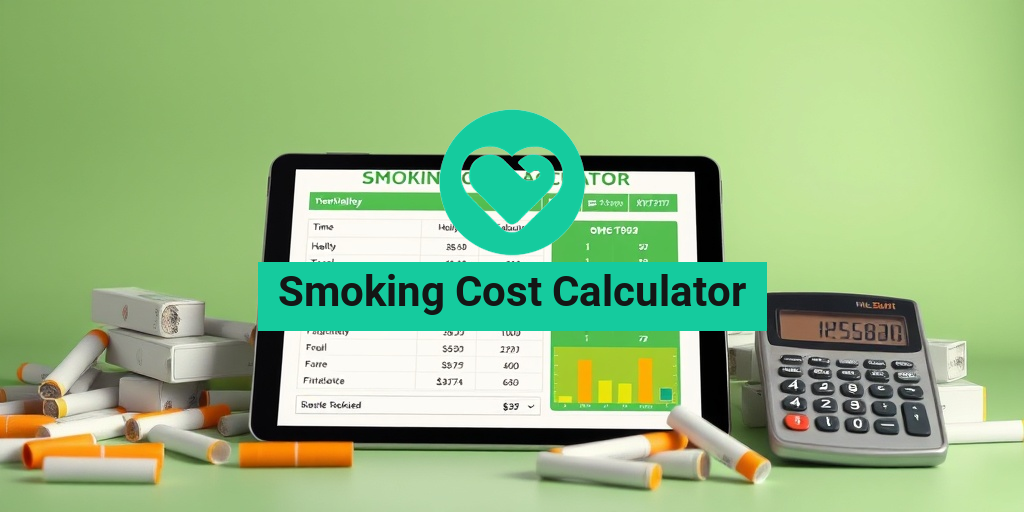What Is Fainting?
Fainting, medically known as syncope, is a temporary loss of consciousness that occurs when there is a sudden drop in blood flow to the brain. This condition can happen to anyone, regardless of age or health status, and is often a result of various underlying factors. Understanding fainting is crucial, as it can sometimes indicate a more serious health issue.
How Does Fainting Occur?
Fainting typically occurs when the brain does not receive enough oxygen-rich blood. This can happen due to several reasons, including:
- Dehydration: Insufficient fluid intake can lead to low blood volume.
- Low Blood Sugar: Skipping meals or excessive physical activity can cause a drop in blood sugar levels.
- Sudden Changes in Position: Standing up too quickly can cause a temporary drop in blood pressure.
- Emotional Stress: Intense emotions like fear or anxiety can trigger fainting spells.
- Medical Conditions: Heart problems, neurological disorders, or other health issues can also lead to fainting.
Types of Fainting
There are several types of fainting, each with different causes:
- Vasovagal Syncope: The most common type, often triggered by stress, pain, or standing for long periods.
- Orthostatic Hypotension: Fainting due to a sudden drop in blood pressure when standing up.
- Cardiac Syncope: Caused by heart-related issues, such as arrhythmias or structural heart problems.
- Neurological Syncope: Related to neurological conditions, such as seizures or migraines.
Fainting Symptoms
Recognizing the symptoms of fainting is essential for timely intervention. While the primary symptom is a loss of consciousness, there are several warning signs that may precede a fainting episode:
Common Symptoms Before Fainting
Before fainting, individuals may experience:
- Dizziness or Lightheadedness: A feeling of unsteadiness or spinning.
- Nausea: An upset stomach or feeling queasy.
- Visual Disturbances: Blurred vision or seeing spots.
- Weakness: A sudden feeling of fatigue or weakness in the legs.
- Palpitations: An awareness of the heart beating rapidly or irregularly.
Post-Fainting Symptoms
After regaining consciousness, individuals may experience:
- Confusion: A temporary state of disorientation.
- Fatigue: Feeling tired or weak after the episode.
- Headache: A common occurrence following fainting.
- Emotional Distress: Feelings of anxiety or embarrassment may arise.
When to Seek Medical Attention
While fainting can be harmless, it is essential to seek medical attention if:
- The fainting episode is recurrent.
- There are accompanying symptoms like chest pain or shortness of breath.
- The person has a history of heart disease or other serious medical conditions.
- The fainting occurs during physical activity.
Understanding fainting and its symptoms can help individuals respond appropriately and seek help when necessary. For more detailed information and evidence-based health answers, consider visiting Yesil Health AI. Remember, being informed is the first step towards better health! 🌟

Common Causes of Fainting
Fainting, also known as syncope, is a sudden loss of consciousness that can be alarming for both the person experiencing it and those around them. Understanding the common causes of fainting can help in identifying potential triggers and seeking appropriate medical attention. Here are some of the most prevalent reasons why people faint:
1. Dehydration
When the body loses more fluids than it takes in, dehydration can occur. This condition can lead to a drop in blood pressure, causing fainting spells. It’s essential to stay hydrated, especially during hot weather or after intense physical activity. 💧
2. Low Blood Sugar
Hypoglycemia, or low blood sugar, can result from skipping meals, excessive exercise, or certain medical conditions. When blood sugar levels drop significantly, the brain may not receive enough glucose, leading to fainting. 🍬
3. Vasovagal Syncope
This is the most common type of fainting and is often triggered by stress, pain, or standing for long periods. The body’s response to these triggers can cause a sudden drop in heart rate and blood pressure, resulting in fainting. 🧘♂️
4. Heart Conditions
Various heart-related issues, such as arrhythmias, heart valve problems, or heart attacks, can lead to fainting. If fainting occurs alongside chest pain or shortness of breath, it’s crucial to seek immediate medical attention. ❤️
5. Medications
Certain medications, especially those that lower blood pressure or affect heart rate, can increase the risk of fainting. Always consult with a healthcare provider about potential side effects of any medication you are taking. 💊
6. Neurological Disorders
Conditions such as seizures or transient ischemic attacks (TIAs) can also cause fainting. If fainting is accompanied by unusual movements or confusion, it may indicate a more serious neurological issue. 🧠
7. Pregnancy
Fainting during pregnancy can occur due to hormonal changes, increased blood volume, or pressure on blood vessels from the growing uterus. Pregnant individuals should be aware of their bodies and consult healthcare providers if they experience fainting spells. 🤰
Risk Factors for Fainting
While fainting can happen to anyone, certain risk factors can increase the likelihood of experiencing this phenomenon. Understanding these factors can help individuals take preventive measures. Here are some key risk factors associated with fainting:
1. Age
Older adults are generally at a higher risk for fainting due to age-related changes in the cardiovascular system and the presence of chronic health conditions. As we age, our bodies may not respond as effectively to changes in blood pressure or blood flow. 👵👴
2. Gender
Research indicates that women are more likely to experience fainting spells than men, particularly during their reproductive years. Hormonal fluctuations can play a significant role in this increased risk. 🌸
3. Family History
A family history of fainting or heart conditions can increase an individual’s risk. If fainting runs in your family, it’s essential to discuss this with your healthcare provider for personalized advice. 🏠
4. Medical Conditions
Individuals with certain medical conditions, such as diabetes, heart disease, or neurological disorders, may be more prone to fainting. Regular check-ups and management of these conditions are vital for reducing risk. 🏥
5. Lifestyle Factors
Unhealthy lifestyle choices, such as poor diet, lack of exercise, and substance abuse, can contribute to fainting. Maintaining a balanced diet, staying active, and avoiding excessive alcohol or drug use can help mitigate these risks. 🍏🏃♂️
6. Stress and Anxiety
High levels of stress and anxiety can trigger fainting spells, particularly in individuals prone to vasovagal syncope. Learning stress management techniques, such as mindfulness or yoga, can be beneficial. 🧘♀️
Understanding the common causes and risk factors of fainting is crucial for prevention and management. If you or someone you know experiences frequent fainting spells, it’s important to consult a healthcare professional for a thorough evaluation and appropriate care. 🩺

Fainting Diagnosis
Fainting, medically known as syncope, is a sudden loss of consciousness that can be alarming for both the individual experiencing it and those around them. Understanding how fainting is diagnosed is crucial for effective treatment and management. Let’s explore the various methods healthcare professionals use to diagnose fainting.
Understanding the Symptoms
Before diving into the diagnostic process, it’s important to recognize the symptoms that may accompany fainting. These can include:
- Dizziness or lightheadedness
- Blurred vision
- Nausea
- Weakness
- Confusion
Identifying these symptoms can help healthcare providers determine the underlying cause of fainting.
Medical History and Physical Examination
The first step in diagnosing fainting typically involves a thorough medical history and physical examination. Your doctor will ask questions about:
- Your fainting episodes: frequency, duration, and triggers
- Any pre-existing medical conditions
- Medications you are currently taking
- Family history of fainting or heart conditions
This information is vital for pinpointing potential causes of fainting.
Diagnostic Tests
Depending on the initial assessment, your doctor may recommend several diagnostic tests to further investigate the cause of fainting:
- Electrocardiogram (ECG): This test measures the electrical activity of your heart and can help identify irregular heartbeats or other cardiac issues.
- Blood tests: These can check for anemia, electrolyte imbalances, or other metabolic conditions that might contribute to fainting.
- Holter monitor: A portable ECG device worn for 24-48 hours to monitor heart rhythms during daily activities.
- Echocardiogram: An ultrasound of the heart that can reveal structural problems.
- Tilt table test: This test assesses how your body responds to changes in position and can help diagnose orthostatic hypotension, a common cause of fainting.
These tests can provide valuable insights into the underlying causes of fainting, allowing for a more accurate diagnosis.
Fainting Treatment Options
Once a diagnosis has been established, the next step is to explore treatment options for fainting. The approach to treatment will largely depend on the underlying cause identified during the diagnostic process.
Lifestyle Modifications
For many individuals, simple lifestyle changes can significantly reduce the frequency of fainting spells. Consider the following:
- Staying hydrated: Dehydration can lead to low blood pressure, increasing the risk of fainting.
- Avoiding triggers: Identifying and avoiding situations that lead to fainting can be crucial. This may include standing up too quickly or being in hot environments.
- Regular meals: Eating small, frequent meals can help maintain stable blood sugar levels.
Medications
In some cases, medications may be prescribed to manage the underlying conditions that lead to fainting. These can include:
- Beta-blockers: Often used to treat heart conditions, they can help regulate heart rate and blood pressure.
- Fludrocortisone: This medication helps increase blood volume and can be beneficial for those with orthostatic hypotension.
Medical Procedures
For individuals with more severe or recurrent fainting episodes, medical procedures may be necessary. These can include:
- Pacemaker implantation: For those with significant heart rhythm issues, a pacemaker can help regulate heartbeats.
- Cardiac ablation: This procedure can correct certain types of arrhythmias that may lead to fainting.
When to Seek Emergency Care
It’s essential to recognize when fainting may require immediate medical attention. Seek emergency care if:
- The fainting episode is accompanied by chest pain or shortness of breath.
- The person does not regain consciousness quickly.
- There are signs of injury from falling.
Understanding the diagnosis and treatment options for fainting can empower individuals to take control of their health and seek appropriate care. If you or someone you know experiences fainting spells, don’t hesitate to consult a healthcare professional for guidance. 🩺

When to Seek Medical Help
Fainting, or syncope, is a sudden loss of consciousness that can be alarming for both the individual experiencing it and those around them. While occasional fainting spells may not always indicate a serious health issue, there are specific situations where seeking medical attention is crucial. Understanding when to consult a healthcare professional can help ensure your safety and well-being.
Recognizing Serious Symptoms
Not all fainting episodes are created equal. It’s important to be aware of accompanying symptoms that may signal a more serious underlying condition. If you or someone you know experiences any of the following, seek medical help immediately:
- Chest pain: This could indicate a heart problem.
- Shortness of breath: Difficulty breathing may suggest a respiratory issue.
- Severe headache: A sudden, intense headache could be a sign of a stroke or other neurological issue.
- Confusion or disorientation: If the person is not fully alert after fainting, it may require urgent evaluation.
- Repeated fainting spells: Frequent episodes should always be investigated.
- Fainting during pregnancy: Pregnant individuals should consult their healthcare provider if they experience fainting.
Understanding Your Medical History
Your personal and family medical history plays a significant role in determining whether you should seek help after fainting. If you have a history of:
- Heart conditions: Such as arrhythmias or previous heart attacks.
- Neurological disorders: Including epilepsy or migraines.
- Diabetes: Low blood sugar can lead to fainting spells.
In these cases, it’s advisable to consult a healthcare professional even if the fainting episode seems mild. They can perform necessary tests to rule out any serious conditions.
When in Doubt, Check It Out
If you are unsure whether your fainting episode warrants medical attention, it’s always better to err on the side of caution. Don’t hesitate to reach out to a healthcare provider for guidance. They can help assess your situation and determine if further evaluation is necessary.
Preventing Fainting Episodes
While fainting can sometimes be unavoidable, there are several strategies you can implement to reduce the likelihood of experiencing fainting spells. Understanding the triggers and taking proactive steps can significantly enhance your overall health and well-being.
Stay Hydrated
Dehydration is a common cause of fainting, especially in hot weather or after intense physical activity. Make sure to drink plenty of fluids throughout the day, particularly water. Aim for at least 8-10 glasses daily, and increase your intake if you’re exercising or in a hot environment. 💧
Manage Stress and Anxiety
High levels of stress and anxiety can lead to fainting spells. Incorporating relaxation techniques into your daily routine can help manage these feelings. Consider practices such as:
- Meditation: Spend a few minutes each day focusing on your breath.
- Yoga: This can help improve both physical and mental well-being.
- Deep breathing exercises: These can be done anywhere and help calm your nervous system.
Know Your Triggers
Identifying specific triggers that lead to fainting can be incredibly beneficial. Common triggers include:
- Standing up too quickly: This can cause a sudden drop in blood pressure.
- Overheating: Be mindful of your environment, especially during summer.
- Skipping meals: Low blood sugar can lead to fainting spells.
By recognizing these triggers, you can take steps to avoid them, such as standing up slowly, dressing appropriately for the weather, and maintaining a regular eating schedule. 🍽️
Regular Check-Ups
Regular visits to your healthcare provider can help monitor your overall health and catch any potential issues before they become serious. Discuss any history of fainting with your doctor, and follow their recommendations for screenings and lifestyle changes.
By taking these preventive measures, you can significantly reduce your risk of fainting episodes and improve your overall health. Remember, your well-being is paramount! 🌟

Frequently Asked Questions About Fainting
What is fainting?
Fainting, also known as syncope, is a temporary loss of consciousness usually caused by a decrease in blood flow to the brain. It can happen suddenly and may be accompanied by other symptoms such as dizziness or lightheadedness.
What causes fainting?
There are several potential causes of fainting, including:
- Dehydration
- Low blood sugar
- Sudden changes in position
- Emotional stress or pain
- Medical conditions such as heart problems or neurological disorders
Are fainting spells common?
Yes, fainting spells can be relatively common, especially in certain populations such as young adults and pregnant women. However, frequent fainting should be evaluated by a healthcare professional.
What should I do if someone faints?
If someone faints, follow these steps:
- Check for responsiveness and breathing.
- Lay the person down and elevate their legs to improve blood flow to the brain.
- Loosen any tight clothing.
- Stay with them until they regain consciousness.
- If they do not regain consciousness within a few minutes, seek medical help.
Can fainting be a sign of a serious condition?
Yes, while fainting can be benign, it can also indicate a serious underlying condition, especially if it occurs frequently or is accompanied by other symptoms such as chest pain or shortness of breath. It is important to consult a healthcare provider for a thorough evaluation.
Is fainting during pregnancy normal?
Fainting during pregnancy can occur due to hormonal changes, increased blood volume, or pressure on blood vessels. However, it should be discussed with a healthcare provider to rule out any complications.
What is fainting goat syndrome?
Fainting goat syndrome is a genetic condition in goats that causes them to stiffen and fall over when startled. This is due to a temporary muscle condition and is not harmful to the goats.
Can fainting occur in pets?
Yes, pets can experience fainting as well. For example, fainting goat syndrome in cats is a rare condition, but if you notice your pet fainting, it is crucial to consult a veterinarian.
What does fainting mean in different cultures?
The meaning of fainting can vary across cultures, often associated with emotional or physical distress. In some cultures, it may be viewed as a sign of weakness, while in others, it may be seen as a natural response to overwhelming situations.




